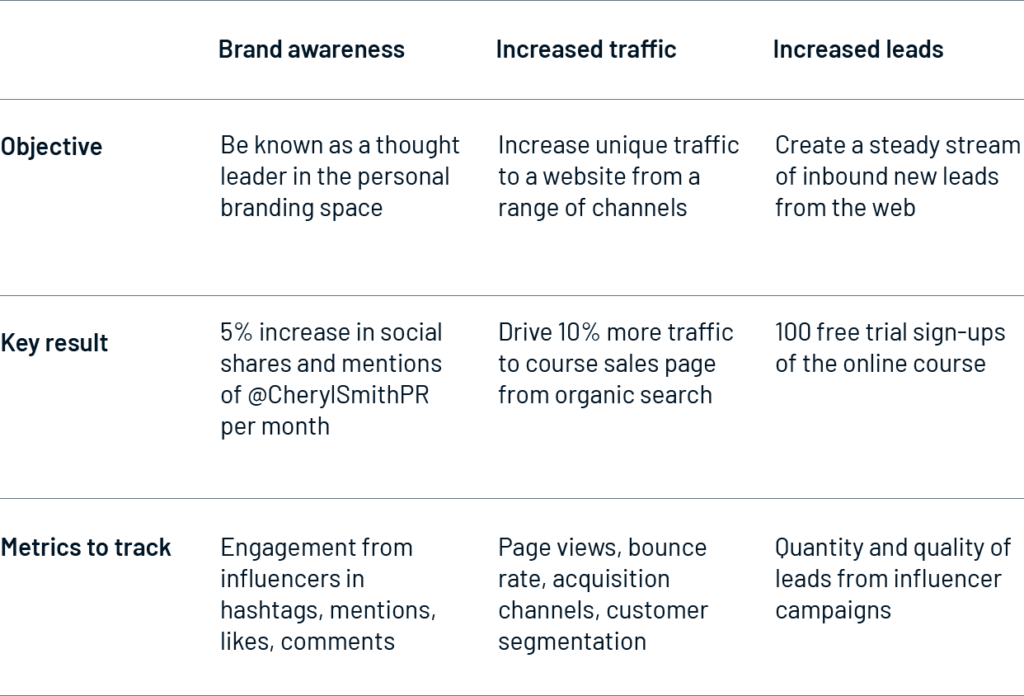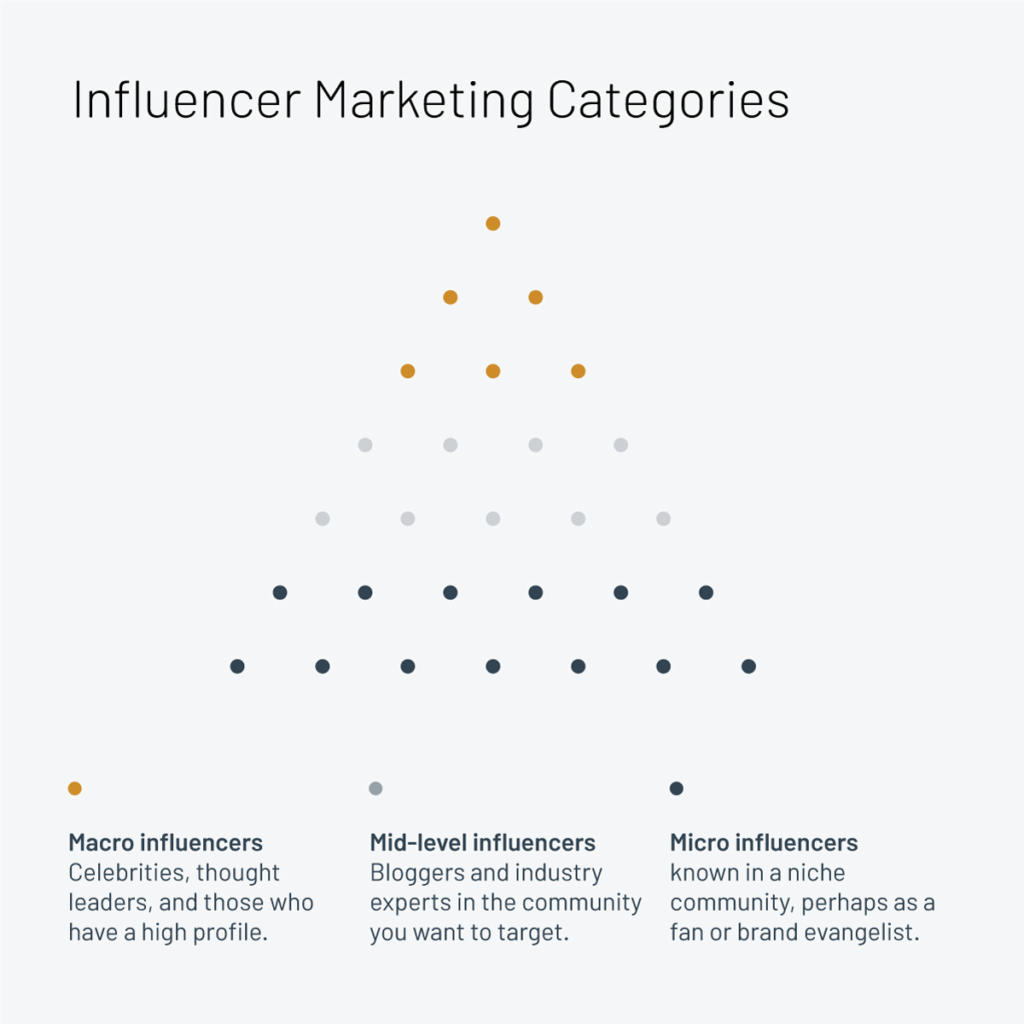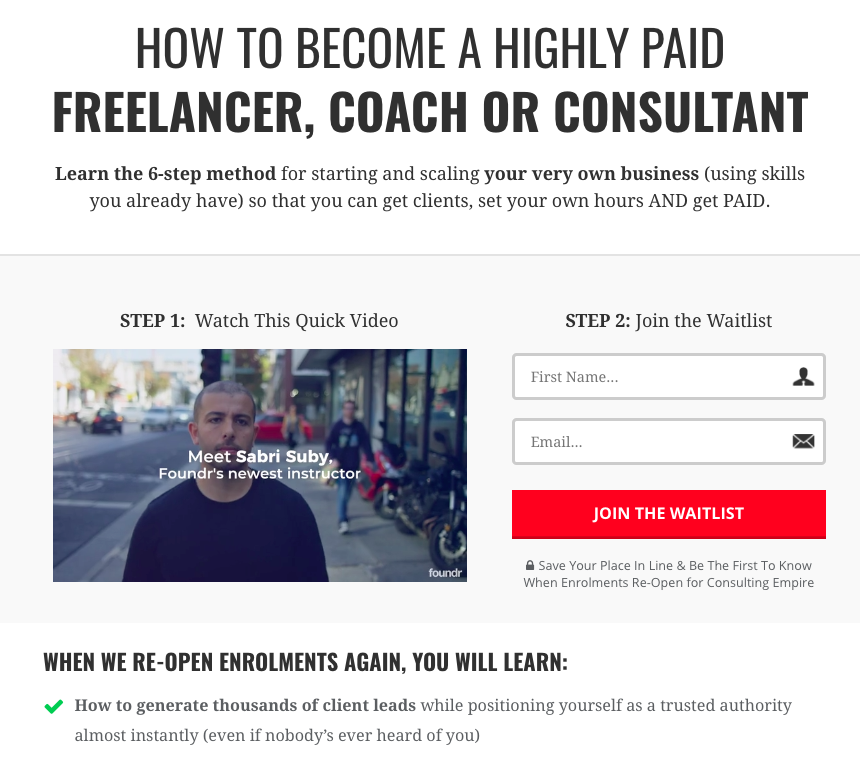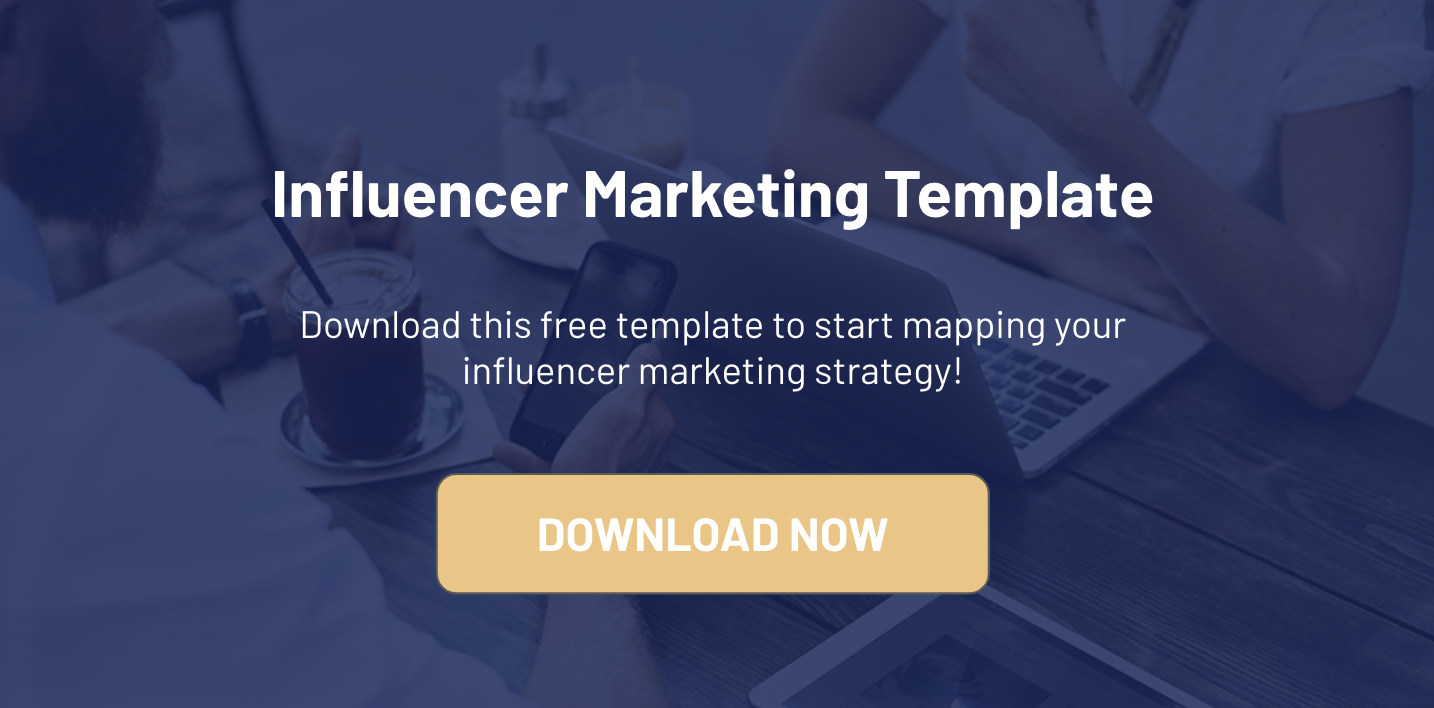Want to get industry experts and online influencers to promote your online course to their audience? Learn how to find, reach out to, and collaborate with influencers in this ultimate guide to creating an influencer marketing strategy for your online course business.
When you hear the term influencer marketing, what comes to mind?
If your first thought is an Instagrammer, YouTuber, or even a Kardashian, you’re not alone.
While these have their place in the world of influencer marketing, the truth is that there is so much more to the term. In fact, as an online course creator, implementing an influencer marketing strategy is a powerful method for unlocking exponential growth in your reach and revenue.
If you have an online course and are looking for new ways to boost brand awareness, attract a more qualified audience, and increase sales, read on. In this complete guide to influencer marketing, we’re going to walk you through how to determine whether influencer marketing is right for you, the steps for creating an influencer marketing strategy, and how you can leverage collaborations with influencers to sell more online courses.
What is influencer marketing?
While the term influencer marketing may be relatively new to the marketing scene, the premise behind it is not novel at all.
Since the golden age of advertising, the idea of leveraging influence to impact purchasing power has been in full swing. For decades, businesses have sought out opportunities to work with influential public icons, from fashion to the silver screen.
Fast forward to today, and technology has fundamentally shifted the way businesses connect with customers. The advent of social media has changed the dynamics of who has influence, and how it is perceived. A survey by Nielson shows that trust in online advertising has plummeted in recent years, and recommendations from friends or peers are becoming increasingly valuable.
“While advertisers have started to follow consumers online, about a third of online advertising campaigns don’t work—they don’t generate awareness or drive any lift in purchase intent. As consumers are in control of how they consume content and interact with brands more than ever, understanding ad resonance across screens is the only way to successfully drive memorability and brand lift today.”
– Randall Beard, President, Nielsen Expanded Verticals
In short, many of us have turned on our ad blockers and default to other sources to discover solutions. As digital conversations continue outside your control as a business owner, brand equity is increasingly in the hands of the masses. This presents both an opportunity and a challenge.
So how can you capitalize on these trends to grow your online course business?
By forming authentic relationships with the individuals who are shaping the conversations and perceptions about your business and industry. This is the crux of an effective influencer marketing strategy. For the purpose of this article, here’s how we’ll define an influencer:
“An influencer is any person or group of people who possess greater than average potential to influence opinions or behaviour, due to attributions such as frequency of communication, personal persuasiveness, or size and centrality to a social network.”
Following this logic, an influencer marketing strategy is defined as any marketing activities done with the purpose of identifying, engaging and nurturing relationships with people who are trusted influencers for your target customer. As you will see, this may include a mix of PR efforts, sales, and content marketing wrapped into a cohesive program.
You can probably get a sense of the benefits associated with using an influencer marketing strategy. Through leveraging this method, you can tap into a highly engaged and curated audience, and build alliances with influencers who are actively looking for ways to add value to their community. Your end goal with influencer marketing is to cultivate a lasting relationship that allows you to connect with their ecosystem in a meaningful way.
Your end goal with influencer marketing is to cultivate a lasting relationship that allows you to connect with an influencer's ecosystem in a meaningful way. #influencermarketing Click To Tweet6 Steps to a Successful Influencer Marketing Strategy
Ready to learn how to build an influencer marketing strategy? We’re going to share insights from online course creators who have used influencer marketing, as well as industry experts who create these strategies for others.
Here’s what we’re going to cover:
- Setting your goals
- Defining your audience
- Finding the right influencers
- Engaging and reaching out to influencers
- Structuring your activities and tactics to implement
- Measuring success
Lastly, we’ll look at some mistakes to avoid when building your strategy. Let’s get to it!
1. Set Clear Goals For Your Influencer Marketing Strategy
The first step in building an influencer marketing strategy is to set clear goals. Any activities you plan should be connected to your overall business and marketing objectives. Not only will this help you measure the success of your efforts, but it will also help facilitate a smooth process for collaborating with influencers down the road.
In general, there are three types of goals you can target using an influencer marketing strategy. Here’s how to think about what metrics to track in each:
1. Increase brand awareness and trust: In this bucket, you’ll want to monitor engagement metrics like social shares, hashtags mentions, likes, and comments.
2. Increase traffic from a new target market: Keep an eye on page views, acquisition channels, and customer demographics from your in opt-in forms.
3. Generate leads and acquire more customers: You can track this through conversions and sales. Getting perfect attribution here can be a challenge, but it can be done using tools such as custom UTM links or specific landing pages tied to each influencer.
To apply this to your online course business, let’s look at a hypothetical example:
Meet Cheryl Smith, our fictional online course creator who has a course on personal branding. With some initial sales and a growing community online, Cheryl wants to give influencer marketing a shot to boost her status as a thought leader in the space, and ultimately attract more premium customers.
Using an OKR goal setting framework, here’s what Cheryl’s goals might look like:

While it’s fine to have multiple objectives, keep in mind that meeting a goal of raising brand awareness will require different influencer marketing tactics than if your goal is to generate leads. Begin with your end in mind and you’ll be well positioned to get the most out of your influencer marketing strategy.
“Get crystal clear on what you provide, and what you want to achieve. Usually we assume that if someone has a business bigger than us, they won’t want to collaborate with us. But that’s not necessarily true. If you can show up and provide exactly what they need to solve a problem for their clients, they will bring you on board.”
– Jim Padilla, Founder, Gain the Edge
2. Define Your Target Audience (Your Ideal Customers)
Finding the right influencer to collaborate with starts with understanding your ideal customers’ needs and aspirations. Once you determine who the biggest source of influence for your target audience is, it will be much easier to identify the influencers to go after.
Here are three questions to help you clarify what is currently influencing your audience’s purchase decisions:
- Who does your customer turn to, to get questions answered? This may include family, friends, colleagues, industry peers or competitors in your space.
- Where do your customers go to discover and evaluate purchase options? Aim to identify the watering holes your customers are heading to for answers. This could be key industry conferences or events, digital forums, review sites, and Google search.
- Who do your customers view as thought leaders in your category, providing authoritative information for decision-making? Think about who are the heavy hitters in your category with the most reach and engagement – this can be both online and off.
The goal with this exercise is to end up with a list of people and places that act as hubs for the kinds of conversations that are impacting how your target customer discovers and evaluates options.
With this work done, you’ll have valuable insight on who it makes sense to go after, and the main traffic sources to consider. The next step is knowing where to find your influencers.
3. Identify The Right Influencers To Collaborate With
First of all, you’ll want to look for influencers who share alignment in your brand values and messaging. Your strategy will not succeed in the long run if you only look for a quick way to get someone else to share your message through a one-time tweet or post. Your success with influencer marketing depends on how well you are able to align the interests of your target customer with the interests of the influencer.
Your success with influencer marketing depends on how well you are able to align the interests of your target customer with the interests of the influencer. #influencermarketing Click To TweetSo what do you look for, when evaluating possible influencer partners?
Here are some questions to ask:
- Does this person have an audience with similar needs and pain points to your own?
- Do they have the same interests and aspirations as those you’re looking to target?
- How engaged are they with their community?
- Are they content creators, and is their content ranking?
- What topics do they share and talk about the most?
- What questions does their audience ask the most?
Remember, it’s about quality over quantity. Having a thousand highly engaged followers is better than a million unengaged followers. When looking to pinpoint influencers, you want to partner with those who have an engaged audience. Look for metrics like conversion rates, email opens, likes, comments, and generally get a sense how active their community is in the groups they lead.
Mike Allton of The Social Media Hat puts it well, “celebrities are certainly influencers. But their audiences are usually quite random and undefined, requiring that sheer numbers make up for that lack of focus. Micro-influencers with small but focused audiences can sometimes be more valuable. The more defined and targeted an audience is, and the better relationship that influencer has with that audience, the less important size is.”
In general, there are three groups that influencers fall into. Ideally, your influencer marketing strategy will have you connecting with people in all three categories:
- Macro influencers: Think celebrities, thought leaders, and those who have a high profile. These people have high engagement, relevance and a following among your target audience. Large media publications, reporters and politicians fall into this category.
- Mid-level influencers: These are the bloggers and industry experts in the community you want to target. While they have a smaller audience than macro influencers, they often have more engaged communities and command greater influence over a particular audience.
- Micro influencers: Those who are known in a niche community, perhaps as a fan or brand evangelist, who have a small but very loyal following.

With this framework, you can start to map the landscape of influencers applicable in your niche.
Where to find influencers to collaborate with:
Now that you know what to look for, here are some ways you can go about finding influencers. There are several ways to do this.
1. Leverage your network
Start with who you know. Take note of what’s being sharing by key people in your own network, as well as what’s going on in your extended network. Getting an introduction can often fast-track the process of building new relationships from scratch.
“Look at who you have in your network first, identify the type of influence they have, among which customers, using which skill sets. Based on what they share, look for ways you can add value first.”
– Patrick McGill, Head of Partnerships, Thinkific
2. Attend networking events
Head to industry events in the niche you’re targeting, making a note of the presenters, sponsors, and other influencers in the milieu. You may be able to find potential candidates from the speaker line-up who are already seen as experts in their field.
Also, keep an eye out for events designed to facilitate connections between those looking to collaborate long-term. JVology is an example of this. Founded by Jay Fiset, the event brings together individuals from all over the world who are seeking to create long-term partnerships in their business.
3. Search online influencer databases and tools
There are many companies that provide matching services between your influencer marketing strategy goals and a roster of influencers. Here are a few tools to consider:
Crowdly: This platform helps you identify authentic advocates who are looking to collaborate with businesses and brands outside of paid campaigns and sponsorships. If you’re looking for real people who care about sharing the message behind your brand versus getting a paycheck, check out this tool.
Musefind: An influencer marketing platform that helps you identify influencers looking to collaborate, and includes matching, messaging, and ROI tracking functionality.
Ninja Outreach: An influencer marketing platform that provides access to thousands of influencers in every niche based on your interests, filters results from most engaged social media networks, and automates your outreach campaigns.
BuzzSumo: This tool is great for identifying people who share content around specific topics and keywords. You can filter results by the sharer’s level of authority, reach, engagement, and location.
Related: How to Get Top Bloggers To Promote Your Online Course
4. Monitor social networks
Have a look for influencers in your a specific industry across all social channels. Take note of any related hashtags across Twitter and Instagram, and check out industry related Facebook or LinkedIn groups.
Influencer marketing expert Susana Yee, Founder of Digital Everything, offers some great tips on where to find the right influencers. “A good way to find influencers in a specific industry is to look on social networks for key players in your industry, and use the trickle-down effect. Meaning, if you don’t have the budget to pay an influencer with one million followers, start looking at who is following them, and find a smaller micro-influencer to work with instead. You can also find industry publications online that may mention influencers. A simple Google Search will sometimes garner lots of great results since many niche influencers will not be on the search databases – they often get enough inquiries directly.”
As you begin to identify influencers and evaluate their footprint in relation to your business goals, make sure to keep track of your insights in one central place. This will help you flag both short term and long term opportunities, and ensure you’re being systematic in your analysis.
There are many influencer tracking platforms available, but if you don’t have the budget for one, download our free outreach tracking template to get suggested evaluation criteria and a framework to keep track of your research.
At this point, you might be tempted to start cold-emailing your prospects to explore opportunities. But not so fast!
Once you’ve gathered initial information on prospective influencers, you’ll want to start monitoring their activities over time to get a sense of what they share with their audience and identify where you can add the most value. In the next step, we’re going to walk through how to start your relationships off on the right foot to maximize your efforts.
4. Reach Out To Your List Of Influencers
Reaching out to influencers for lasting value is an art, and takes time. Thankfully, there is a bit of a formula for how to approach it.
Put yourself in your target influencer’s shoes for a minute. Let’s say you’ve just received two pitches. Which one would you be more likely to respond to?
- A stranger asking you to share a link on social media to an article they wrote, as they feel it would bring value to your audience.
- An individual who’s been participating in your online Facebook Group has demonstrated expertise and generosity, and has proposed a collaboration providing mutual value for your audiences.
As influencers receive an increasing number of requests to collaborate, what can you do to set yourself apart?
To help you stand out from the sea of people that try to get the attention of an influencer on a regular basis, follow this golden rule: never start the relationship by asking for something.
Your goal should be to befriend the individual, not pitch to them. Yes this takes time, and yes it may not guarantee the outcome you want (at least not right away), but it’s the only way to build authentic relationships that last.
“The first thing you need to do is understand how you can serve their audience. Make sure you show up looking to bring value first without expecting anything in return – you have to trust that approach will bring returns.”
– Jim Padilla, Founder, Gain the Edge
The best way to start the process of engaging with an influencer is to start small. Focus on building a relationship above all else.
- Make connections by following your shortlisted influencers on social media, sharing their content, and generally putting yourself on their radar in a way that profiles you as someone they can trust, and receive value from.
- Engage with them by participating in their communities, liking, sharing or leaving comments on their posts. By creating a dialogue, you’ll build rapport and demonstrate your expertise and ability to add value to their community.
- Once you have their attention and have provided memorable value to their community, your next step is to propose specific activities you could co-execute on. A great way to do this is by sending a well-crafted email.
“I find that a good email is always the best way to reach an influencer. They get tons of DM’s and it is hard to keep up. Also, realize that sometimes it takes multiple emails and DM’s. They are busy people. If I have their phone number I always send a text. It’s a very direct way to get their attention.”
– Susana Yee, Founder, Digital Everything Consulting
To help you win at sending outreach emails, we’ve prepared an email template with swipe copy designed to put your best foot forward. Download the free template below.
5. Identify a Win-Win Collaboration With The Influencer
There is no one-size-fits-all way to collaborate with an influencer. You’ll want to shape your collaboration to suit your unique business goals, target audience, and how your own goals map to the influencer’s goals.
To get you thinking, here are a few examples of ways you can work with an influencer, and how they could help you achieve specific marketing goals.
1. Brand mentions: Work with an influencer to include brand mentions on their platforms with the highest engagement. Having your online course or brand mentioned on their Instagram, Twitter, or Facebook in tandem with your own promotion can elevate the perceived value of your offering.
2. Branded blog posts: The great thing about guest blogging on someone’s site is that it is a form of evergreen content. A blog swap on another site with high domain authority is a great tactic to go after the goal of boosting your inbound traffic.
3. Webinars: Webinars are a great tool to co-create content and share to your mutual audiences. Less work than a multi-day event, joint venture webinars are also great candidates for evergreen content as you can automate and share across multiple platforms for lead generation over time.
4. Coupons or discounts: Offering a special deal to their audience is a great way to provide tangible value for them, and drive leads for you. For example, everyone who enrolls in your course using a code exclusive to the influencer network you could track back to that specific campaign.
5. Events: Include the influencer in your next speaker line-up – whether a digital or in-person event. By providing them with an opportunity to be profiled as an expert, your brand will be elevated in the process.
Clifford Luu, founder of Cakes by Cliff, used a combination of these tactics to launch his online course on Thinkific:
“I chose five different influencers from around the world that I already had a connection with, and offered them a chance to access my course in exchange for them providing a testimonial on my course landing page. I also offered them the opportunity to make money by promoting the course through their Instagram story. Each influencer was also given a unique unlimited code which gave a discount to their followers.”
– Clifford Luu, Founder, Cakes by Cliff

Here’s how the Nathan Chan, CEO of Foundr uses influencer marketing to market their online courses and other products:
“We worked with big entrepreneurial meme pages on Instagram and had them promote a webinar for us. We saw very strong returns, upwards of 7-10x ROAS. We’ve also sent physical products to the influencer to have them post on their feed or story, and have seen very strong returns, especially when offering a free product in exchange for post.”
– Nathan Chan, CEO, Foundr
Foundr frequently collaborates with industry experts to build and launch online courses for entrepreneurs. For their Consulting Empire course, Foundr partnered with Sabri Suby – an industry leader in building consulting practices – by co-creating and marketing the course across their platforms.

Susana Yee of Digital Everything has also used a combination of influencer marketing tactics to market her online course:
“Currently I am in the process of launching an online course on influencer marketing. I started to partner with influencers I have worked with on projects as well as brands I have worked with. Once my course launches, they have agreed to share it with their audience. I’ll also be offering an affiliate program for influencers who are interested in promoting my program on their social networks or blogs for a percentage of my course fee.”
– Susana Yee, Founder, Digital Everything Consulting
6. Measure Your Results
Ultimately, the success of your influencer marketing strategy depends on how well you are able to track your activities back to your business objectives.
Check on the goals you set in the first step. You’ll want to make sure your campaigns are set up in a way that enables you to monitor the metrics associated with each goal you have. Aim to measure the impact each influencer has on each goal, so you can validate the assumptions you made in putting the strategy together.
Based on the results of the first month, assess your progress and make note of any changes you’ll want to make in future. Remember to keep conversations with your key influencers going, and ask them for feedback throughout this process.
“Taking a more directed approach to influencer marketing has paid off dramatically. And it’s more than just brand awareness, Agorapulse has been growing at a record-setting pace. Working with key influencers in the social media industry has been a terrific success.”
– Mike Allton, Founder, The Social Media Hat
Influencer Marketing Mistakes To Avoid
To help you shape your influencer marketing strategy, here are a few words from the wise on what to avoid. The experts featured in this section have both implemented influencer marketing to grow their own businesses, as well as crafted strategies for others.
Zach Benson, CEO of Assistagram shares the importance of diversifying your investments and tracking the return on a regular basis. “A lot of people put their eggs in all in one basket. Meaning they just choose one huge influencer who has 500k – 1 million followers and pay them $10k to post a couple of times, expecting a ton of sales. Don’t make this mistake. It’s better to hire a ton of micro-influencers and send them free product in exchange for user-generated content.”
Nathan Chan of Foundr offers a helpful tip around being strategic with the types of platforms you choose, s some provide more evergreen returns than others. “Always get people to post on their Instagram feed, versus their Instagram story to get the most longevity out of the mention.”
Mike Allton of The Social Media Hat stresses the importance of being patient to build relationships over time. “The #1 mistake I see others make, sometimes even when approaching me as an influencer, is to be too impatient. As a business and a marketer you want to see results right away. You want to prove the value of a program and see that ROI immediately. But influencer marketing doesn’t work that way. It takes time to reach out and begin to form a relationship with someone. It takes time to find the right people who have the right audience and the right product fit. And it takes time to achieve a comfort level with an influencer so they’re willing to talk about you.”
Jim Padilla, Founder of Gain the Edge shares the importance of emphasizing quality relationships, over quantity. “For influencer marketing strategy, don’t go wide, go deep. You can build an entire career off of having a handful of strategic partnerships. You want people who understand you and trust you, so focus on delivering fantastic results to a few.”
I hope this guide has helped prepare you to build your own influencer marketing strategy! Have you ever tried one to market your online course? Let us know in the comments below.







